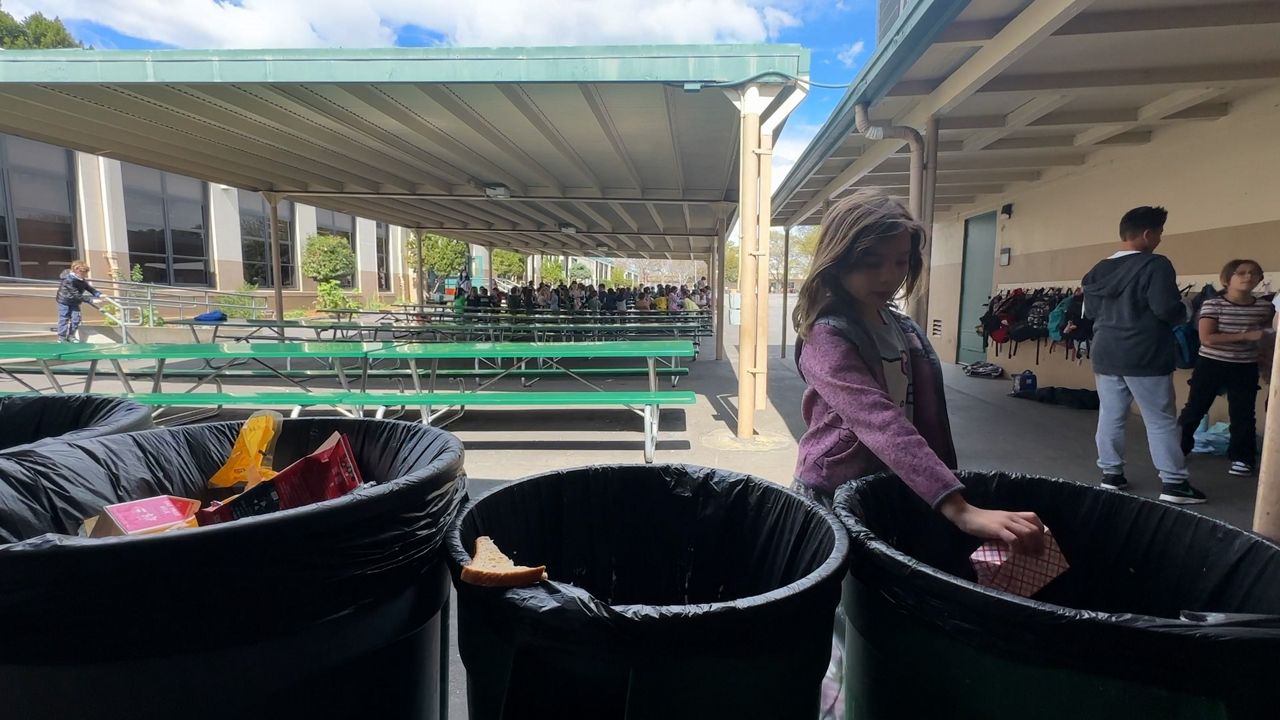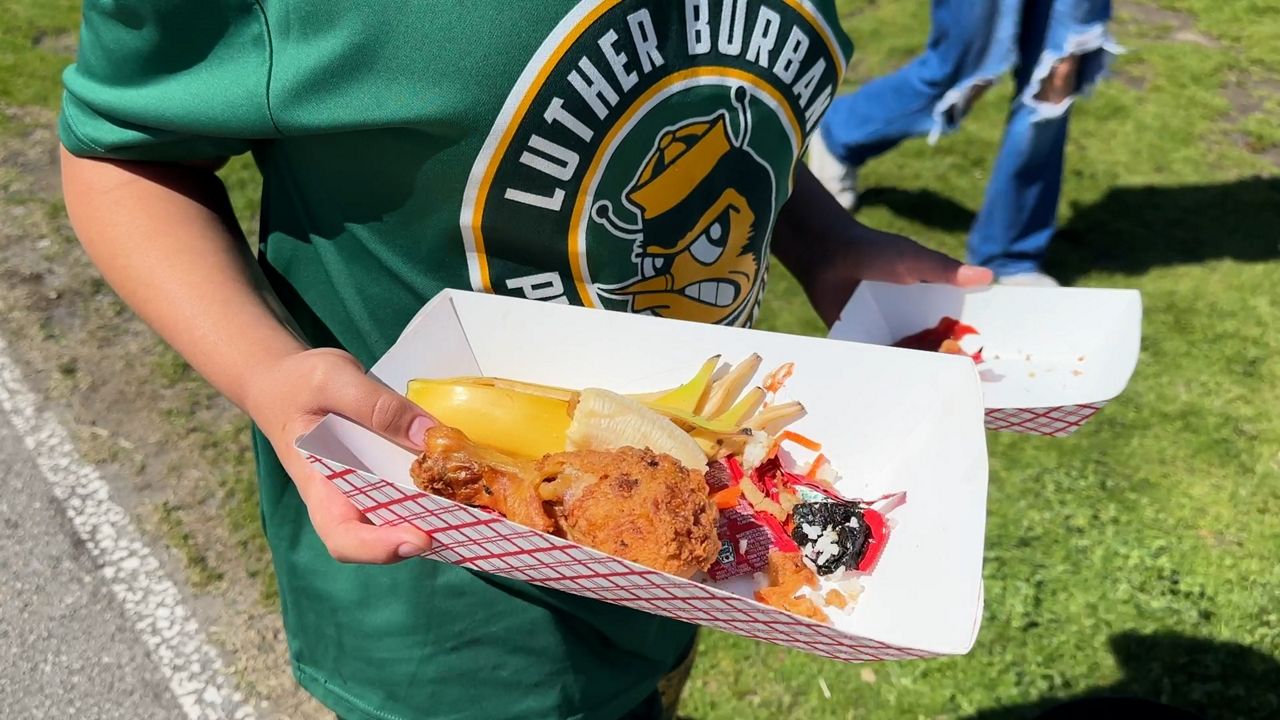BURBANK, Calif. — Let’s be honest.
Kids don’t always eat their lunch at school—whether packed by their parents or from the cafeteria—but with a little guidance, third grader Summer knows where to put her leftovers.
“You have to, like, put food in the correct area so you can help the environment,” she explained, pointing out the collection of different bins at the edge of her school’s lunch shelter.
After a successful pilot at two Burbank elementary schools this September, teaching kids to sort their trash became a part of the curriculum at all elementary schools in BUSD.
Anything still new and unopened can be placed at the share table for kids seeking an extra snack.
Everything else goes to separate containers for liquids, food waste, recyclables and trash.
There’s even a place for used trays, which will be discarded but stacked a certain way, reducing bulk and the number of plastic bags needed.
Sure, there’s been a learning curve, but it was nothing Summer couldn’t handle.

“It was kind of hard at first,” she admitted. “I was always just putting everything in the trash. But now, since they’ve said this, I’ve been actually taking the time to sort.”
It is precisely what recycling specialist Amy Hammes wants to hear.
With the young kids catching on, she decided it was time to graduate to middle school and chose Luther Burbank Middle School to be the first.
Her two pilot grade schools feed into this location, so the protocol wasn’t completely foreign, at least for sixth graders.
The goal of this whole system can be brought down to one bite-sized statement.
“We are getting the food out of the trash,” Hammes said.
And that’s vital.
According to the USDA, 30% to 40% of our nation’s food supply is wasted, making food the single largest category of material sent to city landfills.
In California, we’re talking about 11.2 billion pounds of food a year. Trapped in landfills as it rots, it emits methane, a greenhouse gas that is 84 times more potent and damaging than carbon emissions from fossil fuels over its first 20 years.
“What’s funny is so often in all kinds of environmental problems, it’s a lot of doom and gloom, a lot of things that are really difficult to solve,” Hammes explained. “Food actually in the trash causing methane emissions is one of the easiest things we can solve.”
Separating it and capturing it differently, she added, “actually takes a nuisance…that fills up landfills and it creates a beneficial product to enhance our soils. So you get a big lift.”

It also happens to be the law in California.
SB 1383 mandates diverting food waste to cut the amount of organic waste sent to landfills by 75%.
Hammes says it’s a big goal that will require a major culture change, which is why she’s focused on schools.
“And the cool thing about this at the schools, what makes me so excited,” she said, leaning in a conspiratorial whisper, “you get the families as well.”
She says food sorting stations will be placed at all three BUSD middle schools in the fall and hopes high schools won’t be far behind.
In the meantime, Summer admits her family isn’t totally sorting their organic waste yet, but she really wants them to start.
“It goes into dirt so we can grow more food,” she explained, “and make our landfills smaller.”
And while we may never convince all the kids to eat their carrots, at least now, fewer will end up in the landfill.



